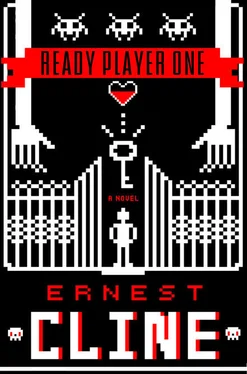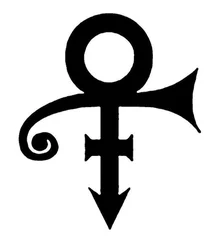Ogden Morrow eventually became Halliday’s business partner, collaborator, and best friend. Many would later liken the pairing of Morrow and Halliday to that of Jobs and Wozniak or Lennon and McCartney. It was a partnership destined to alter the course of human history.
At age fifteen, Halliday created his first videogame, Anorak’s Quest. He programmed it in BASIC on a TRS-80 Color Computer he’d received the previous Christmas (though he’d asked his parents for the slightly more expensive Commodore 64). Anorak’s Quest was an adventure game set in Chthonia, the fantasy world Halliday had created for his high-school Dungeons & Dragons campaign. “Anorak” was a nickname Halliday had been given by a female British exchange student at his high school. He liked the name Anorak so much that he’d used it for his favorite D&D character, the powerful wizard who later appeared in many of his videogames.
Halliday created Anorak’s Quest for fun, to share with the guys in his D&D gaming group. They all found the game addictive, and lost countless hours attempting to solve its intricate riddles and puzzles. Ogden Morrow convinced Halliday that Anorak’s Quest was better than most of the computer games currently on the market, and encouraged him to try selling it. He helped Halliday create some simple cover artwork for the game, and together, the two of them hand-copied Anorak’s Quest onto dozens of 5¼-inch floppy disks and stuck them into Ziploc bags along with a single photocopied sheet of instructions. They began selling the game on the software rack at their local computer store. Before long, they couldn’t make copies fast enough to meet the demand.
Morrow and Halliday decided to start their own videogame company, Gregarious Games, which initially operated out of Morrow’s basement. Halliday programmed new versions of Anorak’s Quest for the Atari 800XL, Apple II, and Commodore 64 computers, and Morrow began placing ads for the game in the back of several computer magazines. Within six months, Anorak’s Quest became a national bestseller.
Halliday and Morrow almost didn’t graduate from high school because they spent most of their senior year working on Anorak’s Quest II. And instead of going off to college, they both focused all of their energy on their new company, which had now grown too large for Morrow’s basement. In 1990, Gregarious Games moved into its first real office, located in a run-down strip mall in Columbus, Ohio.
Over the next decade, the small company took the videogame industry by storm, releasing a series of bestselling action and adventure games, all using a groundbreaking first-person graphics engine created by Halliday. Gregarious Games set a new standard for immersive gaming, and every time they released a new title, it pushed the envelope of what seemed possible on the computer hardware available at the time.
The rotund Ogden Morrow was naturally charismatic, and he handled all of the company’s business affairs and public relations. At every Gregarious Games press conference, Morrow grinned infectiously from behind his unruly beard and wire-rimmed spectacles, using his natural gift for hype and hyperbole. Halliday seemed to be Morrow’s polar opposite in every way. He was tall, gaunt, and painfully shy, and he preferred to stay out of the limelight.
People employed by Gregarious Games during this period say that Halliday frequently locked himself in his office, where he programmed incessantly, often going without food, sleep, or human contact for days or even weeks.
On the few occasions that Halliday agreed to do interviews, his behavior came off as bizarre, even by game-designer standards. He was hyperkinetic, aloof, and so socially inept that the interviewers often came away with the impression he was mentally ill. Halliday tended to speak so rapidly that his words were often unintelligible, and he had a disturbing high-pitched laugh, made even more so because he was usually the only one who knew what he was laughing about . When Halliday got bored during an interview (or conversation), he would usually get up and walk out without saying a word.
Halliday had many well-known obsessions. Chief among them were classic videogames, sci-fi and fantasy novels, and movies of all genres. He also had an extreme fixation on the 1980s, the decade during which he’d been a teenager. Halliday seemed to expect everyone around him to share his obsessions, and he often lashed out at those who didn’t. He was known to fire longtime employees for not recognizing an obscure line of movie dialogue he quoted, or if he discovered they weren’t familiar with one of his favorite cartoons, comic books, or videogames. (Ogden Morrow would always hire the employee back, usually without Halliday ever noticing.)
As the years went on, Halliday’s already-stunted social skills seemed to deteriorate even further. (Several exhaustive psychological studies were done on Halliday following his death, and his obsessive adherence to routine and preoccupation with a few obscure areas of interest led many psychologists to conclude that Halliday had suffered from Asperger’s syndrome, or from some other form of high-functioning autism.)
Despite his eccentricities, no one ever questioned Halliday’s genius. The games he created were addictive and wildly popular. By the end of the twentieth century, Halliday was widely recognized as the greatest videogame designer of his generation—and, some would argue, of all time.
Ogden Morrow was a brilliant programmer in his own right, but his true talent was his knack for business. In addition to collaborating on the company’s games, he masterminded all of their early marketing campaigns and shareware distribution schemes, with astounding results. When Gregarious Games finally went public, their stock immediately shot into the stratosphere.
By their thirtieth birthdays, Halliday and Morrow were both multimillionaires. They purchased mansions on the same street. Morrow bought a Lamborghini, took several long vacations, and traveled the world. Halliday bought and restored one of the original DeLoreans used in the Back to the Future films, continued to spend nearly all of his time welded to a computer keyboard, and used his newfound wealth to amass what would eventually become the world’s largest private collection of classic videogames, Star Wars action figures, vintage lunch boxes, and comic books.
At the height of its success, Gregarious Games appeared to fall dormant. Several years elapsed during which they released no new games. Morrow made cryptic announcements, saying the company was working on an ambitious project that would move them in an entirely new direction. Rumors began to circulate that Gregarious Games was developing some sort of new computer gaming hardware and that this secret project was rapidly exhausting the company’s considerable financial resources. There were also indications that both Halliday and Morrow had invested most of their own personal fortunes in the company’s new endeavor. Word began to spread that Gregarious Games was in danger of going bankrupt.
Then, in December 2012, Gregarious Games rebranded itself as Gregarious Simulation Systems, and under this new banner they launched their flagship product, the only product GSS would ever release: the OASIS—the Ontologically Anthropocentric Sensory Immersive Simulation.
The OASIS would ultimately change the way people around the world lived, worked, and communicated. It would transform entertainment, social networking, and even global politics. Even though it was initially marketed as a new kind of massively multiplayer online game, the OASIS quickly evolved into a new way of life.
In the days before the OASIS, massively multiplayer online games (MMOs) were among the first shared synthetic environments. They allowed thousands of players to simultaneously coexist inside a simulated world, which they connected to via the Internet. The overall size of these environments was relatively small, usually just a single world, or a dozen or so small planets. MMO players could only see these online environments through a small two-dimensional window—their desktop computer monitor—and they could only interact with it by using keyboards, mice, and other crude input devices.
Читать дальше





![Эрнест Клайн - Ready Player Two [calibre]](/books/438636/ernest-klajn-ready-player-two-calibre-thumb.webp)







